A recent study found that 75% of people never scroll past the first page of search engine results pages, which means if your Shopify store isn’t optimised to match what shoppers are looking for, you risk getting lost in all of the ecommerce noise.
So, standing out in search results is more important than ever, and understanding exactly how to align your store with both user intent and search engine requirements can make all the difference.
In this guide designed specifically for Shopify stores, we’ll walk you through the essential Shopify SEO best practices to help you improve your rankings, attract more targeted traffic, and ultimately, provide the best possible experience for both shoppers and Google.
Let’s dive in…
.png)
Keyword research & search intent
One of the best Shopify SEO tips for 2025-2026? Start by thinking like your customer. What are they actually typing into Google when they’re ready to buy?
That’s where search intent comes in - and it’s key if you want to grow your Shopify store.
Do some solid keyword research, but don’t just chase high-volume terms. Focus on long-tail keywords that are product-specific and show clear buyer intent.
Think about it: someone searching “bucket hat” could be browsing. But someone searching “red waterproof bucket hat”? They know exactly what they want - and they’re probably ready to add to cart. That’s the kind of traffic you want.
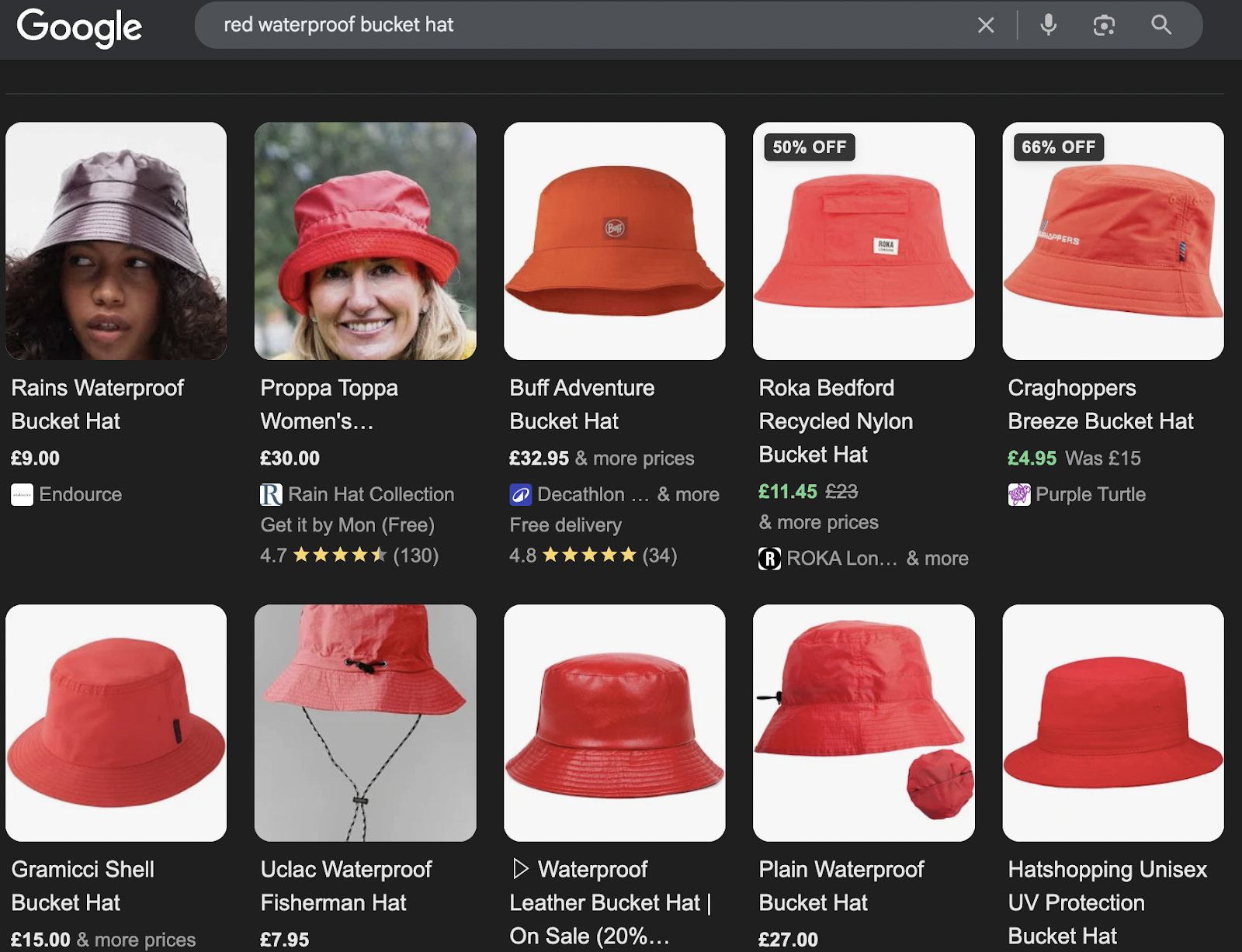
Once you’ve got your keywords, map them to the right pages. Use those highly specific terms (like “red waterproof bucket hat”) on your product pages, broader category-related phrases on collection pages, and informational or how-to keywords on your blog posts. Even category filters (like colour or size) can be optimised to help Google understand your site better.
Getting this right means you’re not just driving traffic - you’re bringing in the right kind of traffic. And that’s how you start to boost Shopify sales and sustainably scale your business over time.

Setting up technical SEO
To get your Shopify SEO strategy right, you need more than great content - you need a clean, search-friendly foundation.
Technical SEO isn’t glamorous, but it’s one of the most important Shopify SEO best-practices for long-term success.
Start with your URL structure. Keep URLs short, readable, and keyword-rich. For example, /products/vitamin-c-serum-sensitive-skin is far better than something like /products/item123456. It tells both users and search engines exactly what the page is about.
Next, use structured data (schema markup) to give search engines extra content. For instance, skincare brands could include product type, ingredients, reviews, price, and availability - helping your listings stand out.
Then, implement canonical tags to prevent duplicate content issues. On Shopify, this often happens with filtered collections or similar product variants. Canonicals help search engines know which versions of the page to prioritise.
Finally, review your XML sitemap regularly. Shopify creates one for you, but make sure it’s up-to-date and doesn’t include irrelevant or broken pages.
These small but powerful technical tweaks can make a big difference in how search engines crawl and index your site. If you’re serious about Shopify SEO and want higher rankings, laying the right technical groundwork is where it all begins.

Site structure & navigation
A smart, user-friendly site structure is good for shoppers, but it's also a major win for Shopify SEO too. Keep your store’s architecture clean, intuitive, and easy for both users and search engines to navigate. And with a strong user experience (UX), you could boost your ecommerce conversion rates by as much as 400%.
Having a shallow site hierarchy is the way to go. Ideally, every product page should be accessible within three clicks from the homepage. This makes your store easier to crawl and ensures important pages aren’t buried deep in submenus.
Think like your customers by using collections that mirror how people actually search. Let’s use Shopify businesses specialising in accessories as an example. If shoppers often filter by item type (like “crossbody bags”), style (“minimalist necklaces”), or occasion (“wedding hair accessories”), turn those into dedicated collection pages. These pages can rank independently and attract targeted traffic.
Your navigation should also be clear and focused. Keep the main menu simple - highlight your top categories, bestsellers, or high-converting pages. Avoid cluttering it with too many options, which can dilute both user experience and SEO value.
Also, don’t forget internal linking. Help guide users (and search engines) from one relevant page to another - link blog content to collections, or feature related products on product pages. We’ll dive into this more later in the article.

Product & collection page optimisation
One place your Shopify SEO efforts really need to shine is on your product and collection pages. These are the pages that convert browsers into buyers - so they’ve got to be both search-friendly and super helpful to your customers.
Descriptive, keyword-friendly titles make a big difference. If you’re selling something like a leather belt, “Classic Black Leather Belt” will perform way better (and make way more sense to your customers) than something vague like “The Classic”. It’s about matching what people are actually searching for.
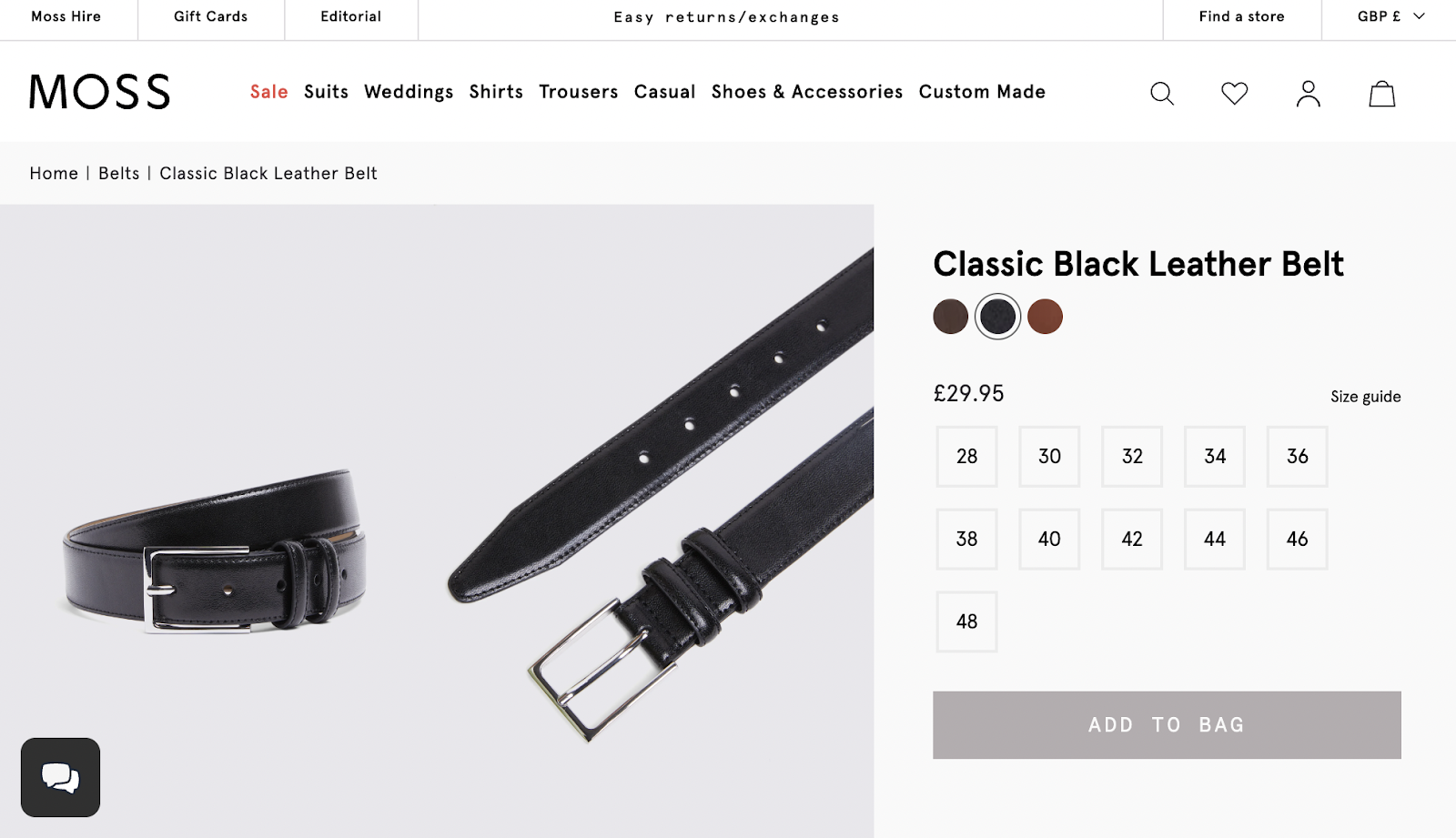
Good headings help too - use them to guide the shopper, break up the page, and reinforce what the product or collection is about.
When it comes to product descriptions, don’t hold back. Talk about the features, materials, sizing, how to wear it - anything that helps the customer picture owning it. The more useful and natural your copy feels, the better it’ll convert (and rank).
Don’t forget to optimise SEO titles and descriptions as this is a free and one of the fastest ways to boost SEO rankings. Use tools like Tapita SEO & Speed Optimizer to bulk optimise metadata with templates for unified brand voice and save time configuring.
Also consider adding a mini FAQ section to your product pages. Things like “Is it waterproof?”, “What’s the return policy?”, or “Will it fit in a carry-on?” help answer real buyer questions and give search engines more context.
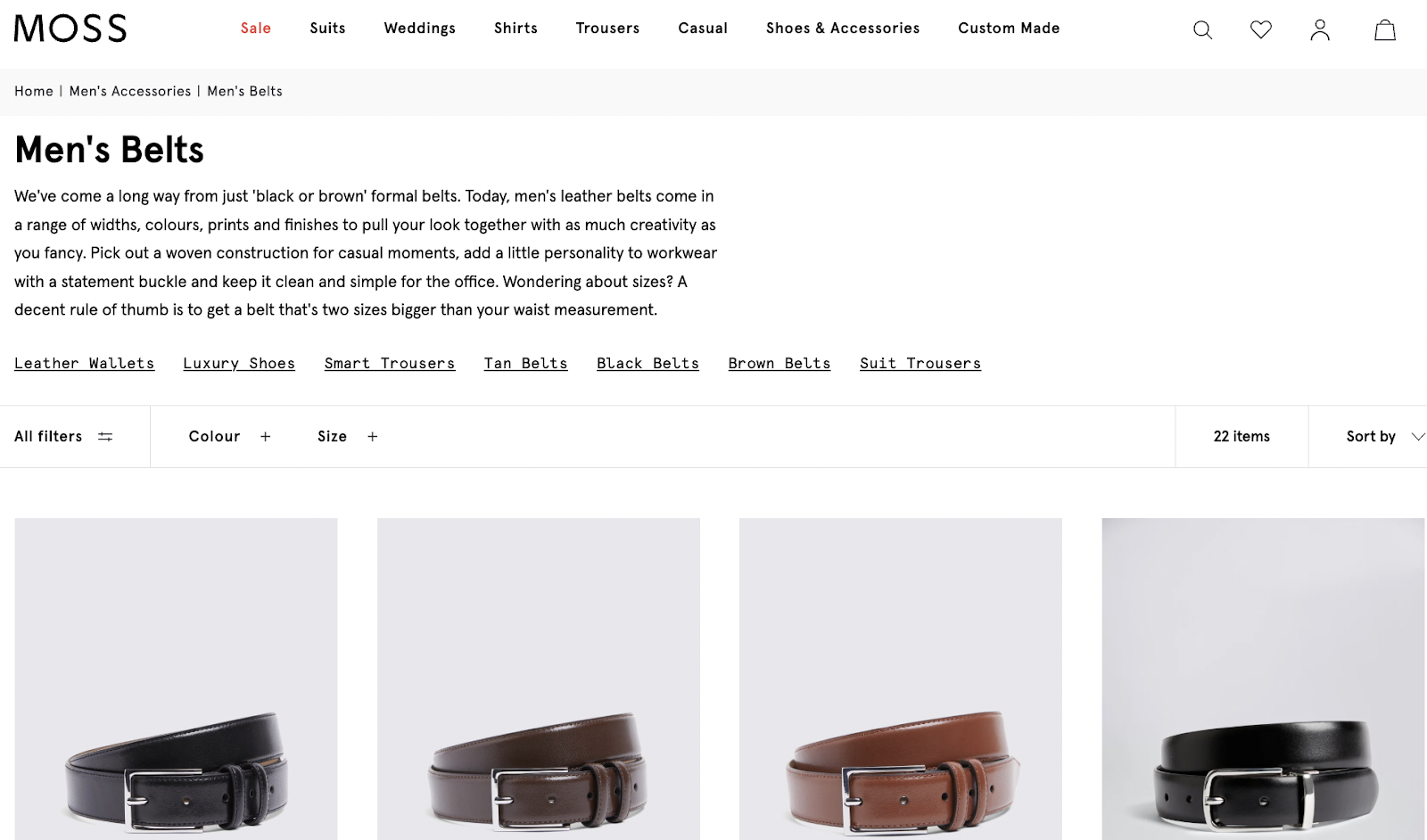
Even your collection pages should have a quick intro, like the example above, just a couple of lines to say what’s in the collection and why someone would care. Little details like this contribute to Shopify SEO best practices, can boost your rankings significantly, and build trust with potential customers.

Site speed & mobile experience
With 87% of smartphone users using search engines at least once a day, most shoppers are browsing on their phones - so if your site is slow, you risk losing customers and damaging your search rankings.
The average mobile web page takes 15.3 seconds to load, and even just a 1-second delay can reduce page views by 11%. And from an SEO perspective, it matters: Google factors page speed into its ranking algorithm, meaning slower sites are less likely to appear in top search results.
To stay competitive, use a fast, mobile-optimised Shopify theme.
Avoid designs with oversized images, large background videos, or unnecessary elements that can weigh your site down, especially on mobile where screen safe is limited.
Be selective with apps and third-party scripts, and enable lazy loading so images only load when needed. Use tools like TinyIMG to compress images and keep file sizes manageable without losing quality.
Also, be mindful of large homepage banners or hero sliders. These often slow down mobile performance and don’t always contribute to conversions.
Check your performance regularly using Google PageSpeed Insights. Fixing technical slowdowns improves load times, and it can directly improve visibility and engagement too.
And since Shopify mobile apps load almost instantly, it’s also worth getting a mobile app for your Shopify store. Not only does it give your customers the fastest possible experience, but it can boost retention and overall satisfaction, something that supports long-term Shopify growth.

User-generated content (UGC), reviews, and Q&A
User-generated content, such as product reviews, Q&As, and customer-submitted photos, adds real substance to your Shopify store. Beyond looking good on the page, it brings genuine SEO value and directly supports conversion by filling in the gaps your product descriptions can’t always cover.
Adding reviews and star ratings directly to your product pages can significantly help grow your Shopify sales. Shoppers trust other shoppers, and seeing real feedback can often be the nudge someone needs to hit “Add to Cart”. It also increases dwell time interaction, both of which are positive SEO signals.
Including Q&A sections lets potential buyers get quick answers to common concerns, which improves the shopping experience and reduces support questions. Even better, these sections often naturally include long-tail keywords, which can help boost your rankings for specific queries.
From a technical standpoint, user-generated content (UGC) supports structured data markup - like review schema and product schema - which can help your pages appear with rich snippets (think star ratings, FAQs, or review counts) right in search results. That extra visibility can make a big difference in click-through rates.
.png)
Content marketing & blogging
Blogging is more than just filling space, it’s a powerful tool for driving traffic, building trust and improving your Shopify SEO. When done right, content marketing can bring in shoppers long before they’re ready to buy - and guide them toward your products naturally. In fact, 52% of customers admit blog content impacts their purchase decision.
Try to focus on writing genuinely helpful, problem-solving content that aligns with what your audience is already searching for. For example, topics like “How to choose the right serum for oily skin” or “Best gifts for skincare lovers” can target high-intent, informational queries while also showcasing your offerings.
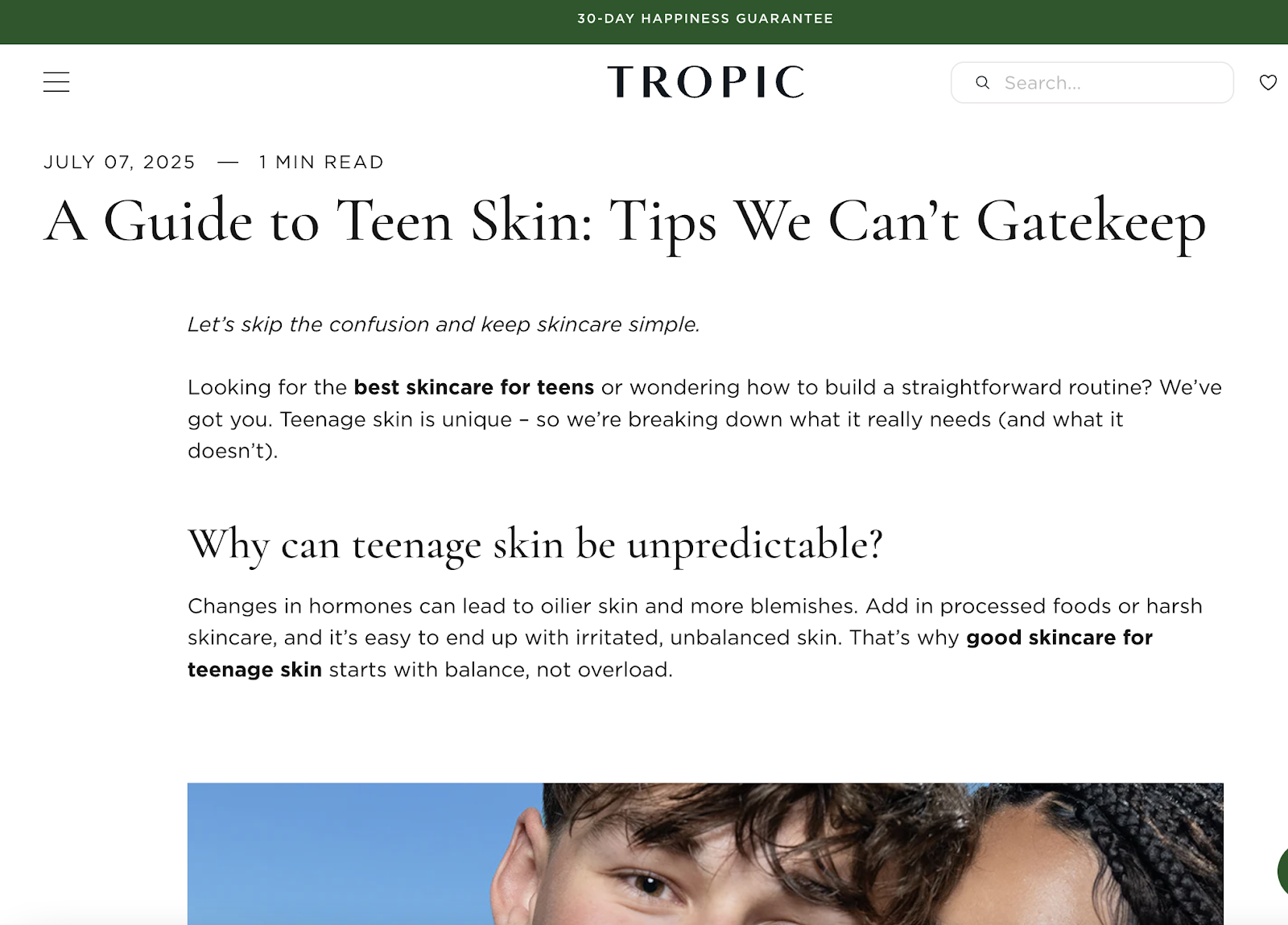
Clear, focused H2 and H3 headings that match what people are actually searching for make your blog posts way easier to skim - for both readers and search engines. Go with keyword-aligned headings like “Top Accessories for Travel” or “What to Wear to a Summer Wedding” instead of something vague or clever that might miss the mark.
It’s also a good idea to add internal links to your products, collections, or other blog posts as this helps guide readers through your store and keeps them engaged. And when it makes sense, link out to trustworthy external sources too. It’s a simple way to add value and build credibility.
Great content builds brand authority and gives your store more chances to show up in organic search results. The key is to create content that is keyword optimised, and answers real questions, while also gently guiding readers toward a purchase.

Site architecture and internal & external linking
Site architecture is basically how your store is structured - and it plays a bigger role in Shopify SEO than most people realise because it impacts the way users navigate and interact with your online store. And when you combine good structure with smart internal and external linking, you’re setting your site up for better rankings and a smoother user experience.
Internal and external linking might not seem exciting, but they play a big role in how your Shopify store performs in search results. When you link between pages on your site - like blogs, collections, or product pages - you’re helping search engines understand what’s important and how everything connects. You’re also guiding visitors through your site naturally.
Using internal links strategically can help funnel authority to your highest-value pages. Think of it as giving search engines a nudge, saying ‘this page matters’. And if the link text includes relevant keywords - even better!
External links are just as important. Linking out to trusted sources adds credibility and context to your content. And on the flip side, when other websites link to you (backlinks), it can significantly improve your domain authority and boost your visibility in search.
Discover the Top 5 Shopify Link-Building Strategies.
.png)
Paid and organic social media
While SEO brings in sustainable, long-term traffic, social media (both organic and paid) can give your store an immediate boost. Together, they create a well-rounded strategy that not only drives visitors but also supports your overall brand visibility.
Organic social media is all about building trust and community. Sharing product launches, tutorials, behind-the-scenes content, or customer reviews on platforms like Instagram and TikTok help you stay visible and top of mind. And when content links back to your store, you create steady, referral-driven traffic that supports your SEO efforts over time.
Paid social ads, when done strategically, can drive high-intent traffic to specific pages, like new arrivals, gift guides, or collection drops. Running ads alongside your Shopify SEO strategy helps you reach audiences before your organic rankings kick in, especially for seasonal or time-sensitive campaigns.
A smart move would also be to embed a social feed directly on your Shopify homepage or product pages. It keeps your site content fresh, adds social proof, and gives new visitors a better sense of your brand.
Social media won’t replace SEO, but it definitely complements it. By blending the two, you create more ways for people to discover your store, and more chances to convert casual scrollers into loyal customers.
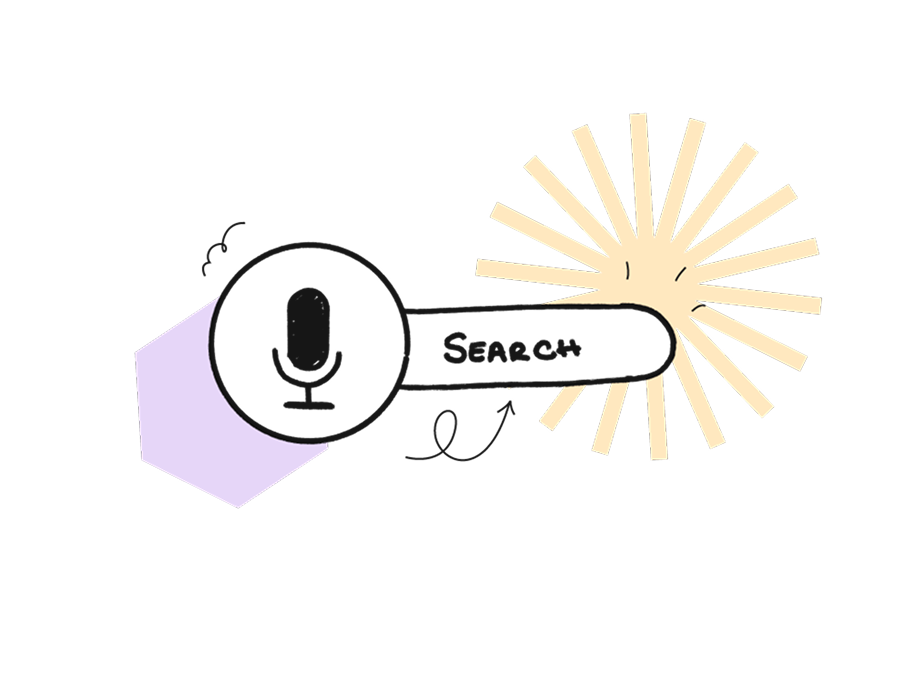
Optimise your Shopify store for voice search
Voice search is more than just a trend, it’s becoming a daily habit. In fact, 2 out of 5 adults use voice search at least once a day. With the rise of AI-powered assistants like Siri, Alexa, and Google Home, more shoppers are turning to voice commands to browse, compare, and even purchase products.
What began as a way to check the weather or set reminders has evolved into a hands-free shopping tool. Shoppers can now ask for product details, prices, availability, and even place orders - all without lifting a finger. This convenience is especially valuable for busy users or those seeking more accessible ways to shop online.
Optimising your Shopify store for voice search means delivering a smoother, more inclusive experience - and reaching an audience that prefers speaking over typing. It also helps you stay competitive as voice commerce continues to grow.
Voice searches tend to be more conversational and question-based. Focus on long-tail keywords, natural language phrasing, and location-specific terms. This is especially important for local business. Including local SEO elements increases your chances of appearing in “near me” voice searches and attracting nearby shoppers ready to buy.

Use of AI-driven tools
AI-driven tools are quickly becoming a valuable part of a smart Shopify SEO strategy. From speeding up content creation to uncovering keyword opportunities and automating repetitive tasks, AI is a smart addition to your toolkit.
That said, AI should support your SEO efforts, not replace them. Your content still needs to be original, brand-specific, and written with your audience in mind. Google is getting better at spotting generic, AI-generated content, and it tends to favour pages that offer real value and a human touch. Your SEO strategy still needs your voice, your insight, and a clear understanding of your customers. When you strike the right balance, you get the best of both worlds: faster workflows and content that actually connects - and performs.
You can use AI to help with keyword research, generate draft product descriptions or meta titles, or even brainstorm blog post ideas. But make sure everything is reviewed, refined, and aligned with your brand voice and goals.
There are also AI-powered Shopify apps that can automate things like alt text, product tagging, or image compression, all of which can improve your site’s SEO performance. AI analytics tools can also help you spot user behaviour trends and make smarter decisions, faster.
.png)
Ongoing monitoring and audits
SEO isn’t a set-and-forget task - especially not on Shopify. Search trends shift, competitors adapt, and Google’s algorithm updates constantly. That’s why regular monitoring and site audits are essential for keeping your SEO strategy on track.
Tools like Google Analytics and Google Search Console are your go-tos for tracking traffic, spotting performance drops, and identifying which pages are gaining traction. Pair them with platforms like Ahrefs, SEMRush, Ubersuggest, or even AI-driven tools to dig deeper into keyword performance, backlinks, and technical SEO issues.
It’s important to routinely check for things like broken links, crawl errors, and outdated or underperforming pages. These small issues can quietly chip away at your rankings if left unchecked. Keep your keyword map up to date too - your product range may evolve, and so should the keywords you’re targeting.
Consistent SEO audits let you spot issues before they impact performance, and uncover new opportunities to grow. If you’re aiming for long-term Shopify SEO success, staying proactive is non-negotiable.
Looking for more ways to grow your Shopify store?
We get it - there’s a lot of competition out there. Standing out in ecommerce today is like navigating a crowded marketplace with a hundred stores selling what you sell. But the fact that you’re here, diving deep into Shopify SEO best practices, shows you’re serious about driving real results.
To truly stand out, you need a smart, holistic strategy - and that’s where we come in. At StoreLab, we help Shopify stores like yours unlock their full potential through powerful tools:
- Shopify Mobile App Builder - Having a dedicated mobile app ensures a smooth shopping experience, with 60% of consumers preferring them to mobile sites. Features like push notifications, in-app recommendations, and seamless checkout help boost customer loyalty and increase AOV.
- Meta Ads Service - Our expert team handles everything you need for successful Meta ads, from strategy to setup and ongoing optimisation, ensuring your brand reaches the right audience and drives high-quality traffic.
If you’re ready to scale to the next level, now’s the time to test new strategies and get expert support. Chat with one of our friendly experts today - your future self (and your bottom line) will thank you.

Skyrocket your Shopify sales with a no-code Apple & Android mobile app. Available now on the Shopify app store.










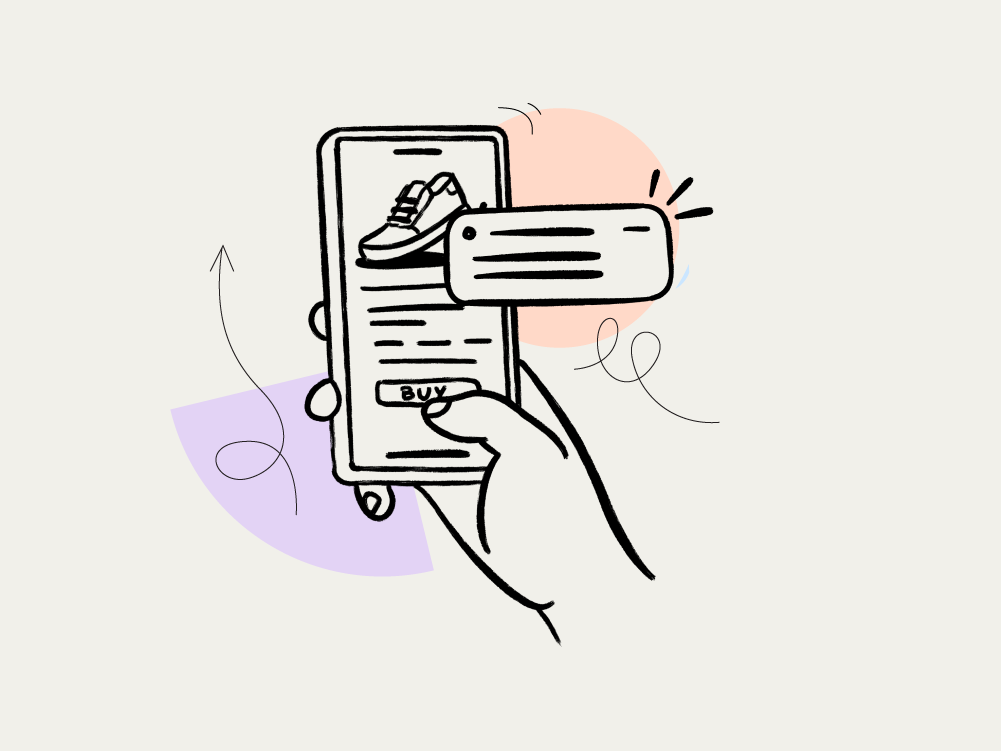




.webp)
